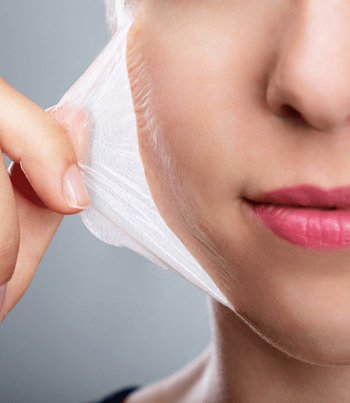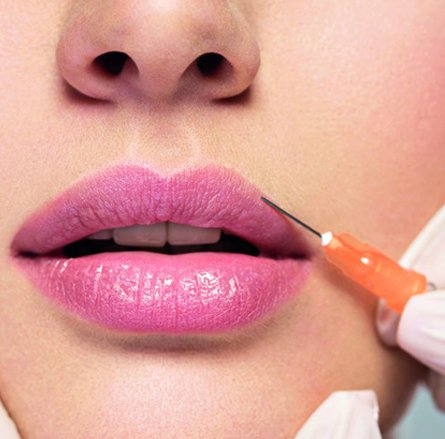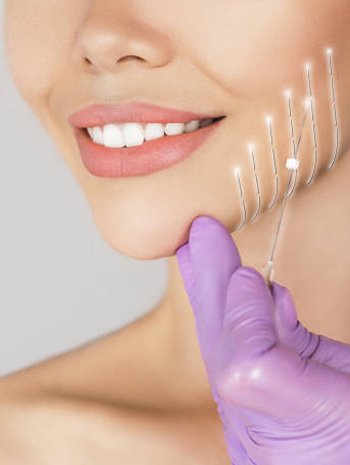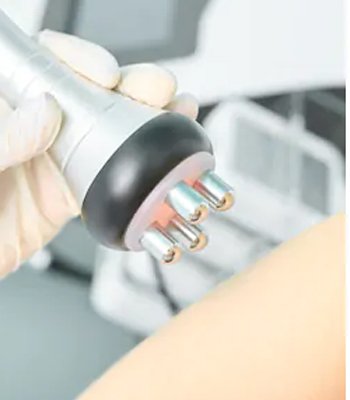Over 5,000 successful surgeries, Highly Experienced Surgeons, Comprehensive Skin & Hair care
A chemical peel is a technique used to improve the appearance of the skin on the face, neck or hands. A chemical solution is applied to the skin that causes it to exfoliate and eventually peel off. The new, regenerated skin is usually smoother and less wrinkled than the old skin. The new skin is also temporarily more sensitive to the sun. There are three basic types of chemical peels,

Many people have heard of this miraculous treatment for wrinkles and expression lines, but what is Botox? It is actually the trade name for a substance injected into the skin which is known to inhibit muscle movement and prevent wrinkles developing or worsening.

Botox treatment works by blocking the nerve signals to the affected muscles around the injection site. The muscles become more relaxed and their activity is reduced, in turn reducing the effects on the skin such as lines.
if you're thinking about getting them or have heard them mentioned and want to know more, then read this comprehensive overview of the cosmetic procedure that are designed to help diminish the appearance of fine lines, wrinkles and other visible signs of aging.

Dermal fillers are small injections of gel, typically made up of hyaluronic acid, that fill in wrinkles and add volume to soft tissue. You can have dermal fillers in different parts of your face: around the eye, cheeks, mouth and jawline, as well as lip fillers administered directly into the lip tissue.
Fillers basically restore lost volume to your face and plump areas, so that deep set lines are smoothed. Why is this needed? Well, as we get older our bodies stop producing collagen and elastin, both of which contribute to the youthful look. Experts argue over when we start losing collagen; but the generally agreed age is 25. Which is pretty young, right? Your collagen and elastin levels then decline at a rate of about 2% per year, and your body will have stopped producing it altogether by your late twenties.
Until recently, the only way to address problems caused by facial skin laxity-such as jowls and drooping cheeks-was facelift surgery. After all, while skin resurfacing treatments can help to restore some degree of firmness, once loose skin is present, only a scalpel can truly remove it. However, while the approach of relying on injectable compounds and skin resurfacing until facelift surgery becomes absolutely necessary works for many patients, not everyone is willing or able to have surgery. If you're in this group, you'll be happy to know that a new type of procedure has been developed to fill in the gap between noninvasive facial rejuvenation.

A thread lift is a type of procedure wherein temporary sutures are used to produce a subtle but visible 'lift' in the skin. Instead of removing the patient's loose facial skin surgically, the cosmetic surgeon simply suspends it by stitching up portions of it. This has the effect of pulling the skin back slightly and therefore lifting and tightening the face. In addition to being ideal for lifting the skin, threads combat aging in another way: by provoking the body's 'healing response' and causing the body to direct large surges of collagen to treated areas. This is important because of the vital role collagen plays in the aging process.
Collagen helps support 'growth factors' that greatly influences the condition of our skin. In addition to being used for wound healing, collagen helps to keep our skin strong, voluminous and supple. As we get older, our bodies gradually produce less and less collagen, which leads to an 80% reduction in skin thickness by about age 70. This loss of volume and strength is a large factor in the creation of excess skin and wrinkles. As the skin grows weaker, it's no longer able to support the tissues beneath it adequately, meaning that gravity pulls it downwards and stretches it. Infusing the skin of the face with fresh collagen when the signs of skin laxity are still mild can help to both reduce looseness (by thickening and hydrating the skin) and prevent it from getting worse (by strengthening the skin).
Microneedling is a minimally invasive cosmetic procedure that's used to treat skin concerns via collagen production. Also known as collagen induction therapy, this treatment may help those looking to reduce the appearance of acne scars and stretch marks.

It's also used in certain anti-aging procedures, such as eyelid surgery and sun spots. Microneedling isn't effective for hair loss, despite the possible role of collagen in hair growth.
You may be an ideal candidate for this procedure if you're in good health and have certain skin concerns that haven't responded to home treatments or other types of dermatologic procedures, such as peels.
This may also be a final step before considering cosmetic surgery for anti-aging and other concerns. Learn more about microneedling and talk to your dermatologist to see if this is the right option for your skin.
Radio-frequency skin tightening is an aesthetic technique that uses radio frequency (RF) energy to heat skin with the purpose of stimulating cutaneous collagen, elastin and hyaluronic acid production in order to reduce the appearance of fine lines and loose skin. The technique induces tissue remodeling and production of new collagen and elastin. The process provides an alternative to facelift and other cosmetic surgeries.

By manipulating skin cooling during treatment, RF can also be used for heating and reduction of fat. Currently, the most common uses of RF-based devices are to noninvasively manage and treat skin tightening of lax skin (including sagging jowls, abdomen, thighs, and arms), as well as wrinkle reduction, cellulite improvement, and body contouring.
Book an appointment and consult our dermatologists & plastic surgeons. Understand the problem and procedures in detail. We believe in giving sufficient time to our patients and help them make the right decision.